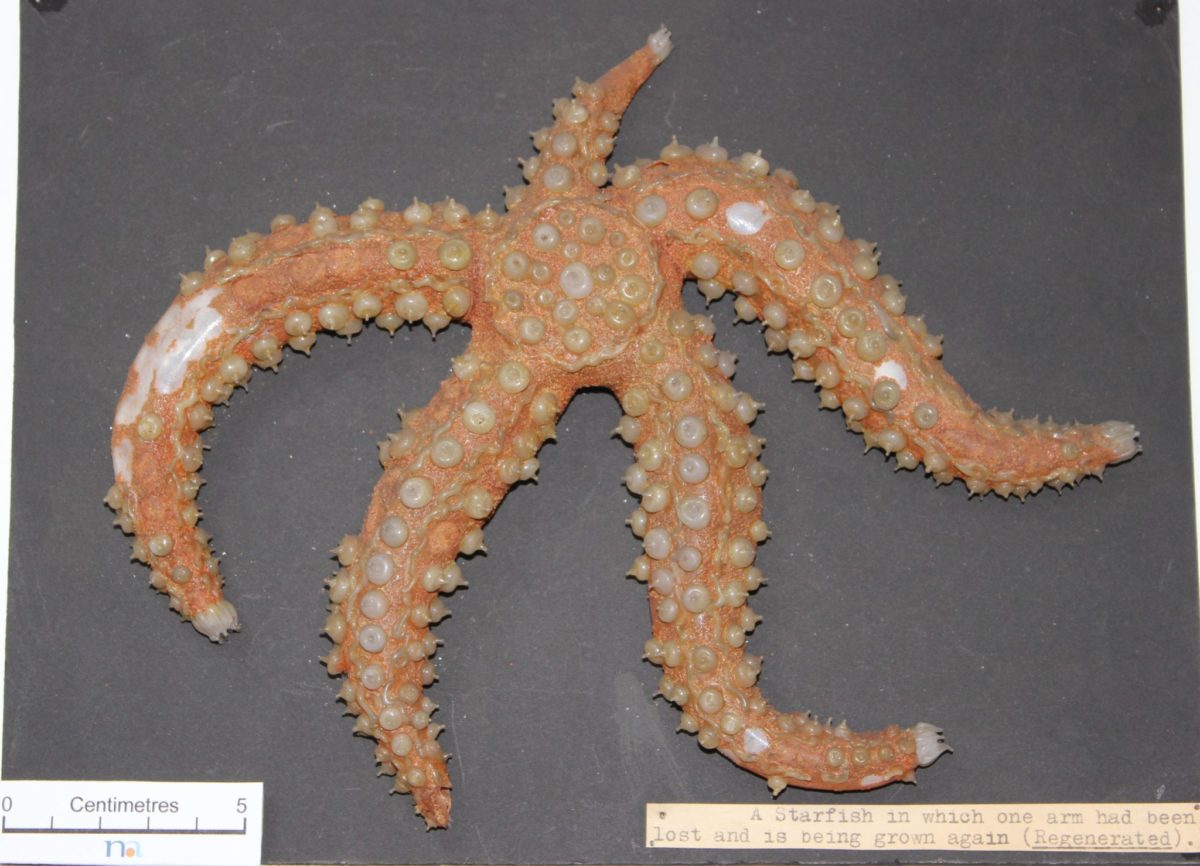December 2013
Conservation of Blaschka Glass Models
In the current Norwich Castle exhibition “Curiosity – Art and the Pleasures of Knowing”, there is an extraordinary collection of 19th century glass models of marine specimens on loan from the National Museum of Wales on display.
As a link to these objects in the exhibition, a small but important collection which ranks amongst the top 10 Blaschka collections in the country, from the NMAS Natural History department collections, were conserved and can be seen in the Fitch Room gallery.
These wonderful models were made in Germany by Leopold and Rudolf Blaschka, father and son, in the late 1800s. They specialized in the manufacture of scientific models and at the height of production, over 700 different models were sold through catalogues and salesmen to international clients in universities and museums. Their glass models, mostly depicting invertebrate animals such as sea slugs, anemones and jellyfish, reflect an age of great scientific exploration. But their attraction is not only in their anatomical accuracy, but also the skill of manufacture and delicate beauty.
Close up of model of jellyfish from the family Oceaniidae, showing intricately painted detail on inside of glass
The opportunity to conserve the models was an exciting challenge. Over the years, past treatments and poor storage conditions had resulted in breakages, inappropriate use of adhesives and poor repairs as well as accumulated dirt. The Blaschka models are an intricate combination of extremely thin glass, fine copper wires, paint and textured surface coatings representing the animal in life. Handling such objects presented particular challenges, and cleaning tests showed that some of the surface coatings did not respond well to most solvents and cleaning solutions, which restricted choice of treatment. In addition, many of the models were stuck onto pieces of hardboard or card with glues that had become discoloured and brittle with age.
The conservation process included carefully detaching the models, removing dirt and old adhesive residues, reattaching broken fragments, re-shaping tentacles! and reconstructing missing elements. Although the work was aimed at getting the objects ready for exhibition, the recent work will now help ensure this important collection’s survival for future generations to enjoy.
Collection before treatment showing some of the models adhered to baseboards and with broken fragments
Left – before treatment, model stuck onto hardboard. Right – after treatment, detached from board, after cleaning and reattachment of missing spines
Above – after treatment showing reconstructed areas of loss
Below – before treatment, model stuck to card & showing missing areas of surface coating loss
Watch this space for future conservation of these amazing octopods !
Follow us on Twitter @Conserve NMS








